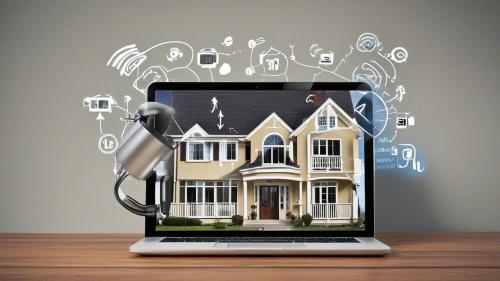When we think of home security, images of high-tech surveillance cameras and alarm systems come to mind. Modern security systems are equipped with features designed to deter would-be intruders from daring to cross the threshold of private residences. We trust these systems, often investing heavily in their latest advancements. Yet, hidden within their promise of safety are vulnerabilities—gaps that can potentially undermine their purpose.
The Underrated Weaknesses
Security experts often emphasize the importance of regularly updating both the hardware and software associated with home security systems. Intruders are no longer just masked bandits sneaking in the dark. Many have evolved into hackers operating from afar. A significant issue is the lack of awareness surrounding the cybersecurity risks that come with connected security devices. If these devices are left with default settings or weak passwords, they become entry points for hackers who can disable systems remotely.
Surveillance: Friend or Foe?
Surveillance cameras indeed act as an effective deterrent; however, they can be double-edged swords. The footage they capture is valuable, which makes these systems an attractive target for hackers. When cameras are accessed illegally, they not only provide unauthorized individuals with real-time knowledge of your home's layout and activities but also can be compromised to spy on residents in what they believe to be their private spaces. To counter this threat, it's imperative to use secured internet connections, enable two-factor authentication, and regularly update passwords.
The Rise of AI in Security
Artificial Intelligence has revolutionized home security with motion detection, facial recognition, and threat analysis. However, this sophistication comes with its set of problems. AI algorithms can misidentify innocent actions as threats or fail to recognize a threat altogether. Moreover, as AI becomes smarter, so do cybercriminals who continually look for ways to bypass these systems. Continuous training of AI models and incorporating human oversight are crucial steps in addressing these weaknesses.
Trust Issues with Security Providers
Living under constant surveillance and yet feeling secure requires trust in security service providers. Many users have raised concerns about the privately collected data from these systems and how it is handled. Data breaches within these companies can expose personal information, leaving homeowners vulnerable to targeted attacks. Transparency in security providers' data policies and ensuring compliance with privacy laws can mitigate these risks.
The Human Element
The paradox of the smartest security systems is their reliance on human interaction. Arming and disarming systems, responding to alerts, and making split-second decisions in an emergency all require human intervention. Unfortunately, this is where most errors occur—accidents compounded by human oversight, negligence, or panic. Training family members on using security systems efficiently and having clear emergency procedures can significantly reduce these risks.
Emphasizing Comprehensive Security
While technology forms the core of modern home security, adaptive measures considering all-round human, physical, and digital protection is vital. Landscaping to eliminate hiding spots near entry points, reinforcing locks, and using sophisticated window sensors are essential. Even the best tech cannot replace good old neighborhood watchfulness; staying connected with community safety networks enhances vigilance.
Security is an ongoing commitment, not a one-time investment. Regular upgrades, awareness of emerging threats, and an understanding of the system's limitations ensure robust protection for one's home and loved ones. To truly take command of one's domain, users must not become complacent, remaining ever vigilant in this cat-and-mouse game with vulnerabilies in both the real and digital realms.
The hidden vulnerabilities: what security systems fail to protect




